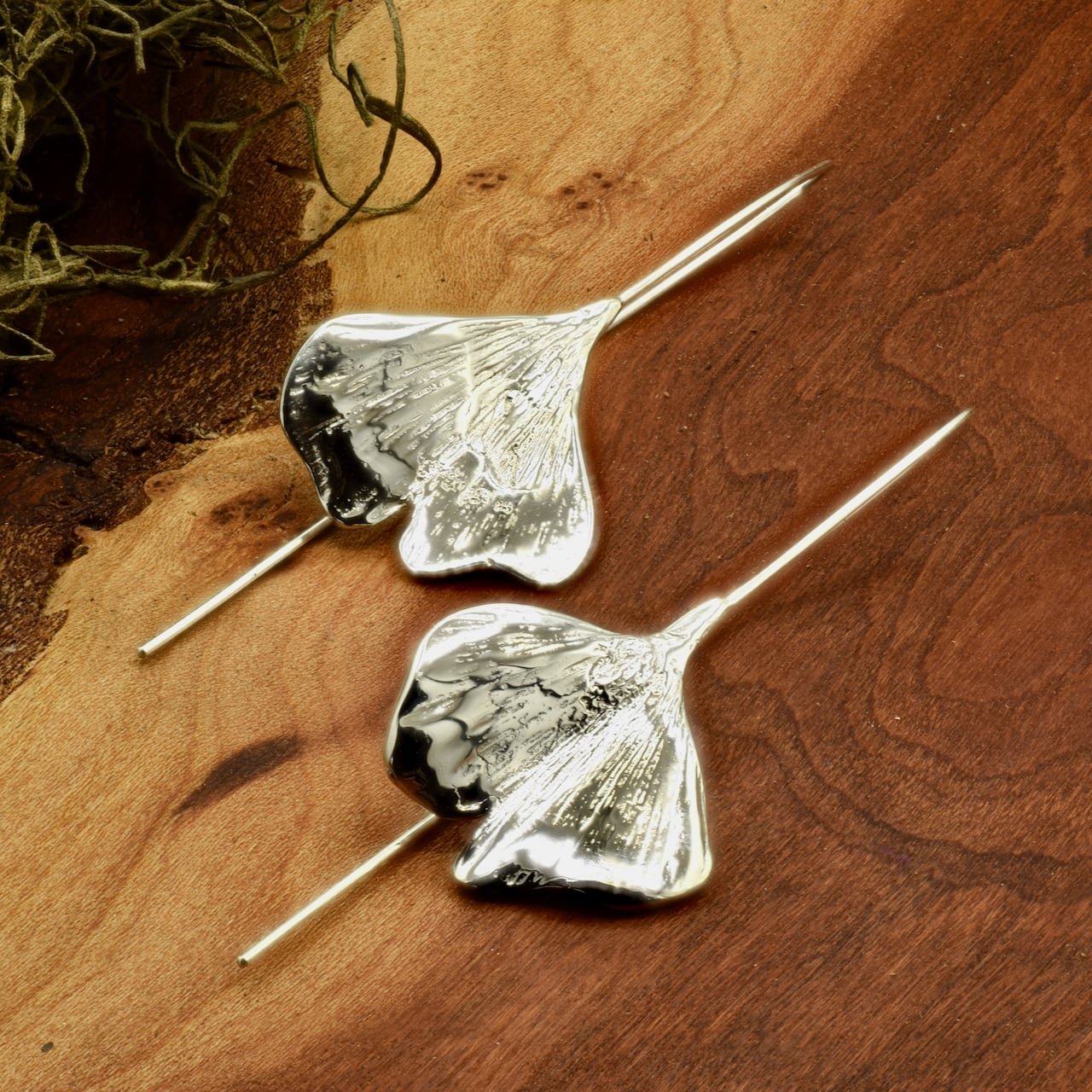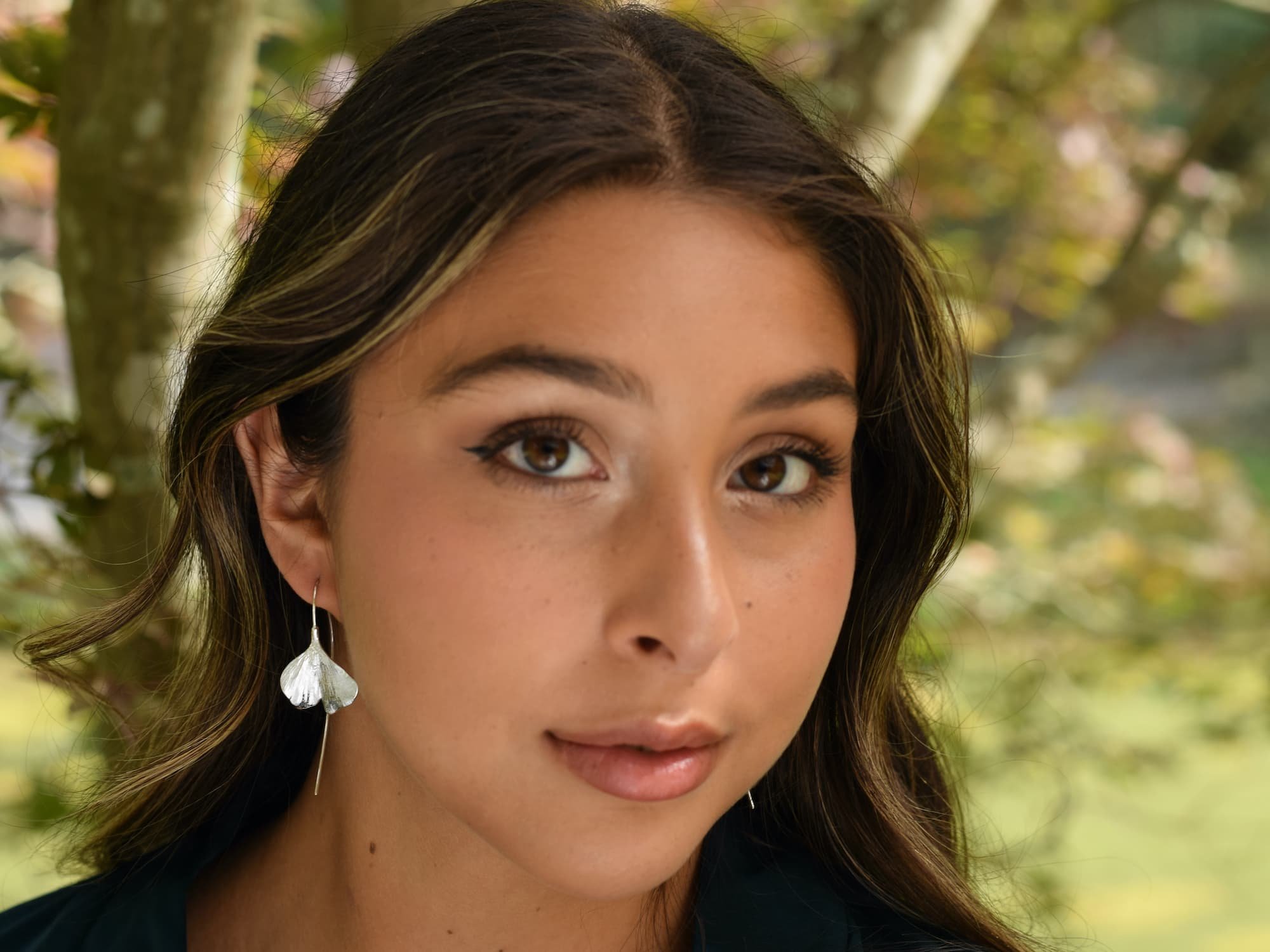 Image 1 of 6
Image 1 of 6

 Image 2 of 6
Image 2 of 6

 Image 3 of 6
Image 3 of 6

 Image 4 of 6
Image 4 of 6

 Image 5 of 6
Image 5 of 6

 Image 6 of 6
Image 6 of 6







Ginkgo Leaf Earrings | (Ginkgo biloba)
Bold and beautiful, classic silver ginkgo earrings. We make them by casting two springtime ginkgo leaves in sterling silver. Silver wire is then hammered into an arch that feeds easily through the ear. The earrings are light-weight and sway gently with your movement.
Sterling silver
2 inches long, ¾ of an inch wide
SHIPS IN 1 - 3 DAYS
Instagram or Facebook: @shademetals
Bold and beautiful, classic silver ginkgo earrings. We make them by casting two springtime ginkgo leaves in sterling silver. Silver wire is then hammered into an arch that feeds easily through the ear. The earrings are light-weight and sway gently with your movement.
Sterling silver
2 inches long, ¾ of an inch wide
SHIPS IN 1 - 3 DAYS
Instagram or Facebook: @shademetals
Bold and beautiful, classic silver ginkgo earrings. We make them by casting two springtime ginkgo leaves in sterling silver. Silver wire is then hammered into an arch that feeds easily through the ear. The earrings are light-weight and sway gently with your movement.
Sterling silver
2 inches long, ¾ of an inch wide
SHIPS IN 1 - 3 DAYS
Instagram or Facebook: @shademetals
Living Fossils

At one time, Ginkgoales species covered vast areas of the world, but over millions of years, almost all species in this group disappeared due to climate changes and mass extinctions. Ginkgo bilobas are the only surviving member of its entire family, making them a unique link between modern plants and ancient prehistoric flora.
Ginkgo’s resilience is legendary, making it one of the longest-surviving tree species on Earth. Several factors have contributed to its remarkable ability to persist while so many other species have vanished over time.
One of the most significant reasons for its survival is its extreme longevity. Individual ginkgo trees can live for over 1,000 years, and some ancient specimens in China and Japan are estimated to be more than 2,500 years old. This incredible lifespan allows the species to endure environmental changes that would wipe out less resilient plants.
Ginkgo trees are also highly adaptable to harsh conditions. Unlike many trees that require specific soil and climate conditions, ginkgo can thrive in poor soils, polluted urban environments, and extreme weather. This adaptability has made it a popular choice for city streets, where other trees struggle to survive.
Another key to its survival is its resistance to pests and diseases. Ginkgo leaves contain powerful chemical compounds that make them unappetizing to most insects and highly resistant to fungal infections. This natural defense system has helped ginkgo trees remain largely unaffected by the plagues that have devastated other plant species throughout history.
Perhaps one of the most remarkable aspects of the ginkgo tree is its ability to withstand extreme damage from fire and radiation. After the atomic bombing of Hiroshima in 1945, several ginkgo trees near the blast site survived and continued growing, despite being exposed to intense heat and radiation. This extraordinary resilience earned them the nickname “bearers of hope.”

Finally, ginkgo’s unique reproductive system has played a role in its survival. Unlike most modern trees, ginkgo has separate male and female trees, a trait more common in ancient plant species. The female trees produce fleshy seeds with a strong, unpleasant odor, often compared to rancid butter. While unpleasant to humans, this smell may have once attracted dinosaurs or other prehistoric creatures that helped disperse the seeds, allowing the tree to spread and thrive over millions of years.
Through its remarkable longevity, adaptability, resistance to disease, and ability to survive extreme conditions, ginkgo has managed to persist where countless other species have disappeared. Today, it remains a living link to Earth’s prehistoric past, a true survivor in the plant kingdom.